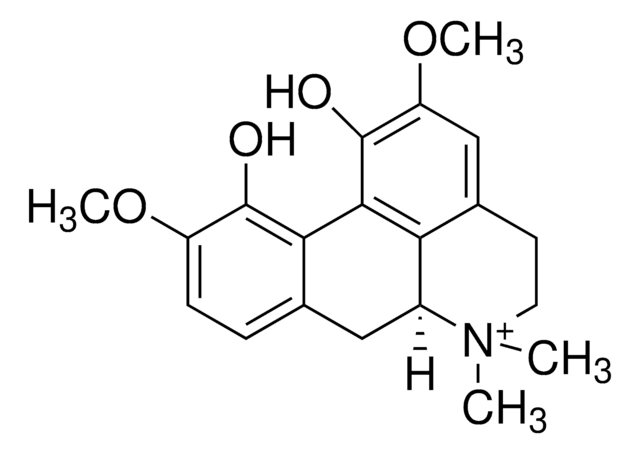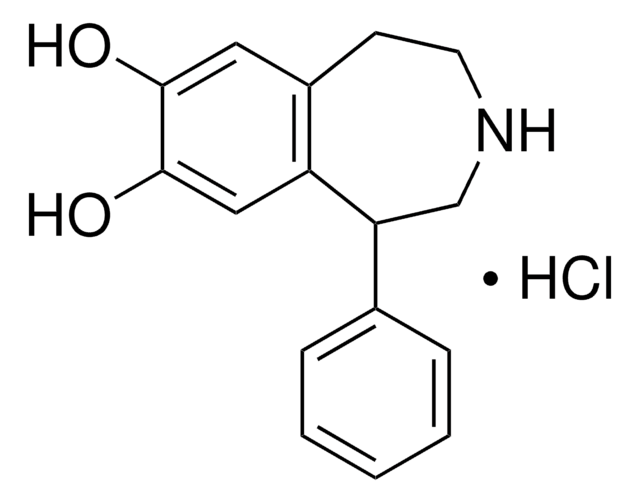A4393
R-(−)-Apomorphin -hydrochlorid Hemihydrat
calcined, ≥98.5% (with NaOH, titration)
About This Item
Empfohlene Produkte
Qualitätsniveau
Assay
≥98.5% (with NaOH, titration)
Form
calcined
(Powder to Crystalline Powder)
Lagerbedingungen
protect from light
under inert gas
Farbe
white to gray
mp (Schmelzpunkt)
285-287 °C (lit.)
Löslichkeit
H2O: ~10 mg/mL, clear, yellow-green
SMILES String
Cl[H].Cl[H].[H]O[H].[H][C@]12Cc3ccc(O)c(O)c3-c4cccc(CCN1C)c24.[H][C@]56Cc7ccc(O)c(O)c7-c8cccc(CCN5C)c68
InChI
1S/2C17H17NO2.2ClH.H2O/c2*1-18-8-7-10-3-2-4-12-15(10)13(18)9-11-5-6-14(19)17(20)16(11)12;;;/h2*2-6,13,19-20H,7-9H2,1H3;2*1H;1H2/t2*13-;;;/m11.../s1
InChIKey
CXWQXGNFZLHLHQ-DPFCLETOSA-N
Angaben zum Gen
human ... DRD1(1812) , DRD2(1813) , DRD3(1814) , DRD4(1815) , DRD5(1816)
Suchen Sie nach ähnlichen Produkten? Aufrufen Leitfaden zum Produktvergleich
Anwendung
Biochem./physiol. Wirkung
Signalwort
Danger
H-Sätze
P-Sätze
Gefahreneinstufungen
Acute Tox. 3 Oral
Lagerklassenschlüssel
6.1C - Combustible acute toxic Cat.3 / toxic compounds or compounds which causing chronic effects
WGK
WGK 3
Flammpunkt (°F)
Not applicable
Flammpunkt (°C)
Not applicable
Persönliche Schutzausrüstung
dust mask type N95 (US), Eyeshields, Faceshields, Gloves
Analysenzertifikate (COA)
Suchen Sie nach Analysenzertifikate (COA), indem Sie die Lot-/Chargennummer des Produkts eingeben. Lot- und Chargennummern sind auf dem Produktetikett hinter den Wörtern ‘Lot’ oder ‘Batch’ (Lot oder Charge) zu finden.
Besitzen Sie dieses Produkt bereits?
In der Dokumentenbibliothek finden Sie die Dokumentation zu den Produkten, die Sie kürzlich erworben haben.
Kunden haben sich ebenfalls angesehen
Unser Team von Wissenschaftlern verfügt über Erfahrung in allen Forschungsbereichen einschließlich Life Science, Materialwissenschaften, chemischer Synthese, Chromatographie, Analytik und vielen mehr..
Setzen Sie sich mit dem technischen Dienst in Verbindung.











